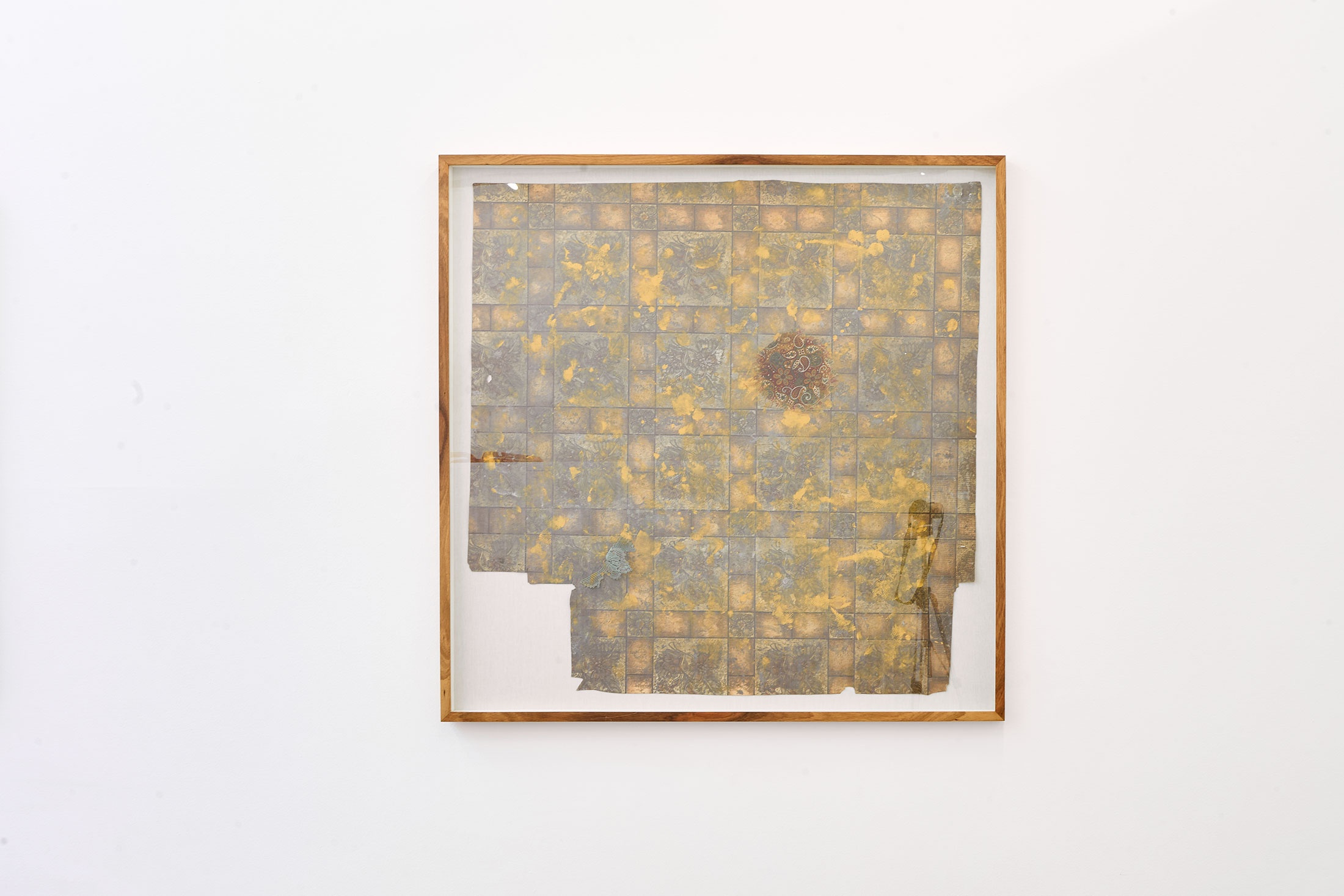Igshaan Adams

Boeta Joe se voordeur tapyt (2010) marks a moment of transition in Adams’ practice, the artist alighting on the subject around which his practice has since turned – linoleum flooring lifted from homes in the communities in which he was raised. In this early engagement with habit, ritual and commitment as abraded onto vinyl, the artist excerpts a portion of ‘tapyt’ for close looking, refiguring it as a framed abstraction. It was not the first time Adams had considered what lay underfoot – previously, he had worked with prayer mats – but here, his attention turned away from religious devotion to a more secular invocation of repetition. The vinyl fragment, taken from the space just inside a neighbour’s front door, is coloured by marks accumulated over time, repairs made, tears left unmended, stains, tracked dirt. To these, the artist adds his own interventions – paint and fabric offcuts – engaging in an understated dialogue with the indexical record, asking after the worn surface of the vinyl flooring as utility and testament. The title, which recalls the particulars of the place and the person who inhabited it, establishes the specificity central to the artist’s reflections – to this, Adams’ works more often note the resident’s name, the room in their house from which the vinyl was quoted, or the street address. Adams later began translating such flooring in woven compositions, introducing distance between the reference and the beaded object after its likeness. His preoccupations have since extended beyond the domestic to include the improvised paths across empty lots and fields in Bonteheuwel and the neighbouring township, as in Langa (2021), an aerial view of such dusty tracks. More recently, however, he has returned to interior spaces – and even to his first works. In Mapping Yvonne’s Kitchen (2021), for example, he reappraises the flooring first included in Hennie se kamer tapyt (2010), contemporaneous with Boeta Joe se voordeur tapyt. Yvonne and Hennie were spouses; he paraplegic, she is primary caregiver; his bedroom their kitchen. The room is the same room seen twice, only differently framed; the first an augmented document, the second a lyrical impression of care and sacrifice.
Collected under the loose description of tapestry, Igshaan Adams’ woven works offer a haptic meditation on the changeability of being, which is never static but always reworked, stitched and unstitched. To the artist, the ritual repetition necessary to his medium presents itself as spiritual simile; each bead strung a material dhikr. Much like the ninety-nine names of Allah are chanted in Sufi practice, that they might wake the dormant divine within the speaker, so weaving too is an embodied commitment to slow accumulation and transformation. Bearing witness to life’s traces and traumas as inscribed in overlooked spaces – particularly those of Bonteheuwel, a low-income suburb on the Cape Flats where Adams was raised – the artist transcribes desire lines across fields and worn paths on linoleum floors, honouring the passages of time and people that shaped them. Adams’ work is marked by both a distinct, even sensual, pleasure in the tactile, and a lyrical invocation of the immaterial; the patina of the past distilled in objects of singular beauty and quiet dedication.




